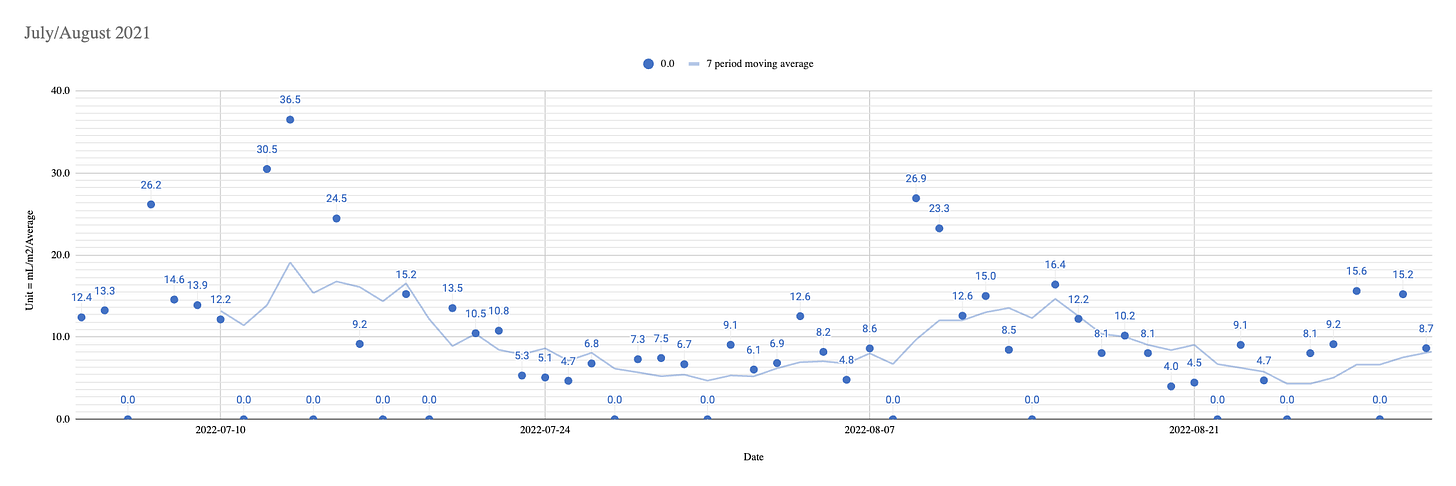I often get questions from colleagues who are getting started with measuring clipping volume. One of the questions I’m often asked is some version of: “how do you deal with inaccurate measuring, or reporting?” This question comes in different forms, sometimes they’re worried about the amount of sand in the bucket, sometimes the ability of one employee to measure the same as another employee.
My answer is that when you are measuring, recording and making decisions from clipping volume, you should be looking at averages, rather than specifics. I’ll explain by telling you how we measure, report and track.
The chart above shows two months worth of clipping volume data. Each point is the average volume from the 21 greens we measure each time we mow. The line is the trailing seven-day average, including 0.0, which are days we didn’t mow. I generally do not concern myself, or make management decisions from data on an individual green. Nor do I even pay much attention to the 21 green average on a single day. Most of my management decisions are based on the 7 day average. Clipping volume on any one day can go up and down depending on conditions. Averaging those peaks and troughs over seven days will give an idea of how much your grass is growing and inform management decisions.
So, if an operator measures wrong, or slightly different from another operator, it isn’t really that important, because you’re looking at and making decisions from averages that are smoothing over any potential errors.




